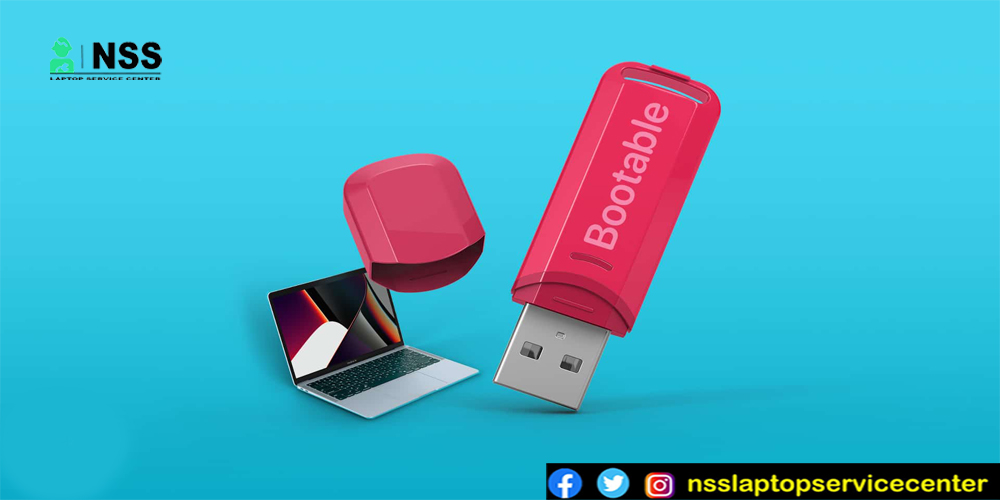
Booting your MMac from USB allows you to fix boot problems or keep an additional copy of macOS for testing. Here’s a way to kick a Mac from USB.

Mac will not boot? Fancy testing out the newest macOS beta? You must attempt running your Mac from a drive.
It’s a great way to solve many issues and is less complicated to line up than you would accept. It works on any operating system, from a Macbook Pro to an iMac. Therefore, scan to seek out bent to crate your Mac boot from a USB drive.
Why Boot macOS from USB?
There are several intelligent reasons to boot macOS from a USB drive.
The most probable is that your Mac will not begin or has another downside. Booting from a drive gets around this. It permits you to access the contents of your internal drive – assuming it still works and is not encrypted – and helps you repair your Mac disk with the disk utility and different troubleshooting tools.
Another reason is that you’ll run a different version of macOS. This is often necessary if crucial apps are not running on the most recent version. It is common for older apps to become incompatible eventually.
And equally, it permits you to check a brand-new version before upgrading. This includes attempting the beta version, bugs, and everyone. It would not be stable enough to use as your daily driver.
To run macOS off a USB drive, you would like to dream of at least 32GB for casual use. We’d recommend one that is plenty more significant if you intend to use it seriously. Fast hardware is additionally essential; this suggests USB 3 and either a flash drive with quick read and write speeds or a solid-state drive rather than a hard drive. You’ll notice a difference if your hardware is not fast enough.
You also need a copy of macOS:
There are some ways to install a copy of macOS on your USB drive. If your Mac runs a macOS version older than Mojave, you’ll download many versions through the App Store. Just visit your purchased tab to see them listed among your other apps.
If your purchased tab doesn’t contain the version you’re looking for, you’ll find links to the old macOS version on the Apple website. Once you click these, they will download via the App Store. At the time of writing, you’ll get all versions, from Yosemite to Big Sur.
You initially need to sign up for the Apple Beta software program to download the macOS beta.
You have to download the version that is suitable for the hardware of the Mac you’re operating. So, if you have a MacBook Pro or iMac with Apple Silicon, you’ll need an ARM-compatible version.
You might encounter an error message if you want to download a version older than what you currently run on your Mac.
Install macOS on a USB drive:
So now you can set up your USB drive to boot to macOS. First up, you would like to format the drive. Connect the disk to your laptop, and after that, launch Disk Utility.
Locate your drive within the left-hand Column, where you will see both the device and the volume. On a newer version of macOS, you would possibly need to go to View > Show all devices to make this show up.
Now, eject it and select the device name. Then, Erase – name the drive and choose the “APFS” format or select Os Mac extended. Lastly, set the scheme to “GUID” and pursue with Erase. Keep in mind that this will wipe everything from your drive.
Now, download the version of macOS you would like to use. Download usually happens via the App Store and is saved to your Application folder. Double-click it to induce starting.
Click through the license agreement; you will be asked wherever you would like to put in the software system. Click Show All disks and choose your drive. Select install, enter your password, and it will begin.
Depending on what version you are putting in, all the required files might copy over to your drive initially, which could take up to ten minutes then your Mac can clean up, and the complete installation can begin. Or, with a newer version, it will simply install straight from your desktop.
It takes a short time, either minute. The speed of your drive can affect the time the method takes. However, we’d advocate setting aside an hour for it.
When it’s done, your Mac can either bring it up or you will bring it up manually. Currently, you simply ought to set it up as you ordinarily would. Hook up with the Wi-Fi, add your Apple ID data, etc. After complete installation, you can boot the Mac from a USB drive.
Also, Read: How To Start In Safe Mode Windows 10
Also Read: Are Macs Good For Gaming
Make your Mac Boot from a USB Drive:
The entire method of setting your Mac aside from USB ought to take an hour at the most. Install it on a quick SSD, and you have a usable dual-boot system. Otherwise, you may install macOS on a flash drive, stick it in an exceeding drawer, and keep it for emergencies.
Conclusion:
This article discussed how to boot a Mac from a USB drive and why you should boot a Mac with a USB drive.
Frequently Asked Questions
Popular Services
- MacBook Battery Replacement Cost
- HP Printer Repair in Delhi NCR
- Dell Laptop Repair
- HP Laptop Repair
- Samsung Laptop Repair
- Lenovo Laptop Repair
- MacBook Repair
- Acer Laptop Repair
- Sony Vaio Laptop Repair
- Microsoft Surface Repair
- Asus Laptop Repair
- MSI Laptop Repair
- Fujitsu Laptop Repair
- Toshiba Laptop Repair
- HP Printer Repair Pune
- Microsoft Surface Battery Replacement
- Microsoft Surface Screen Replacement




